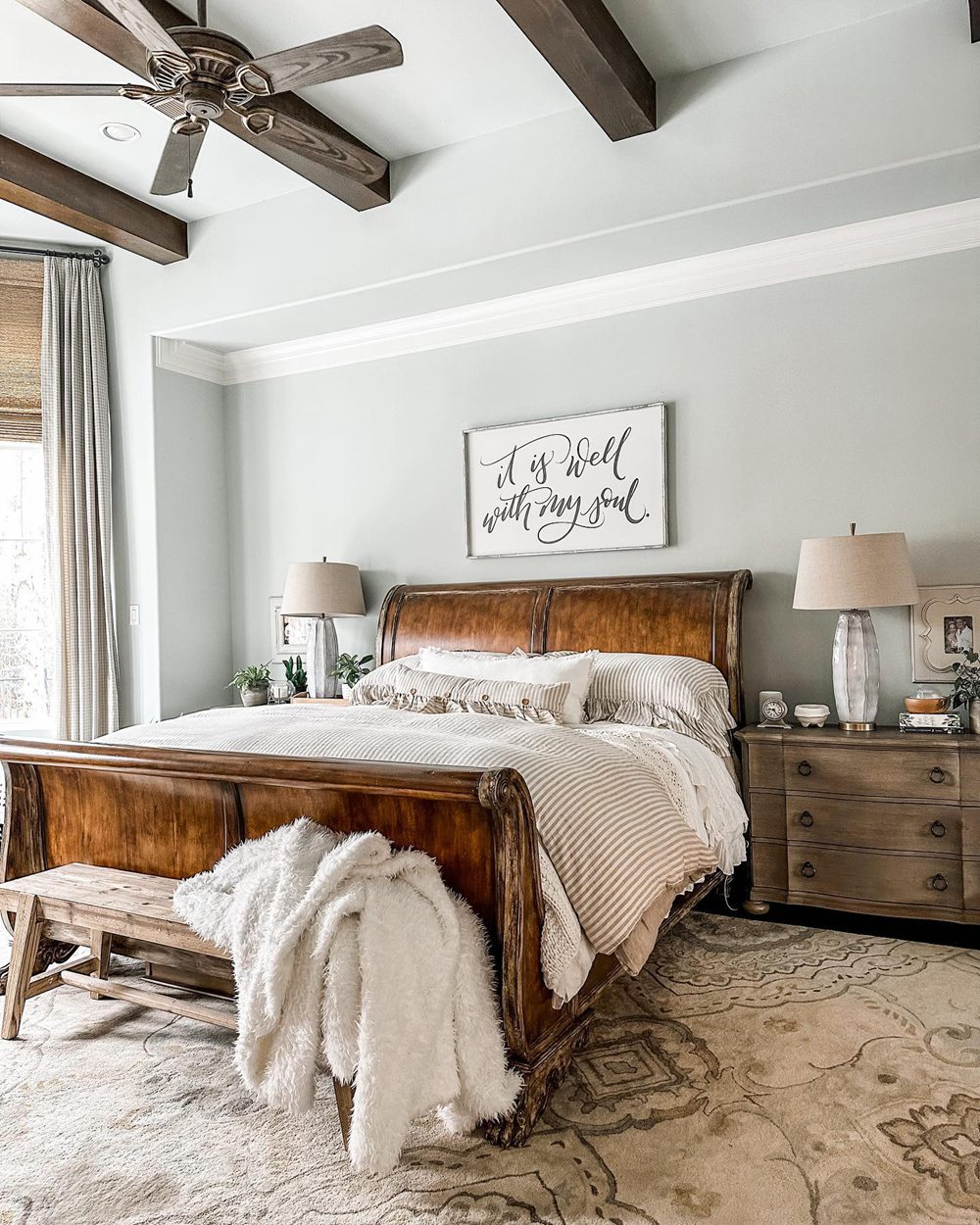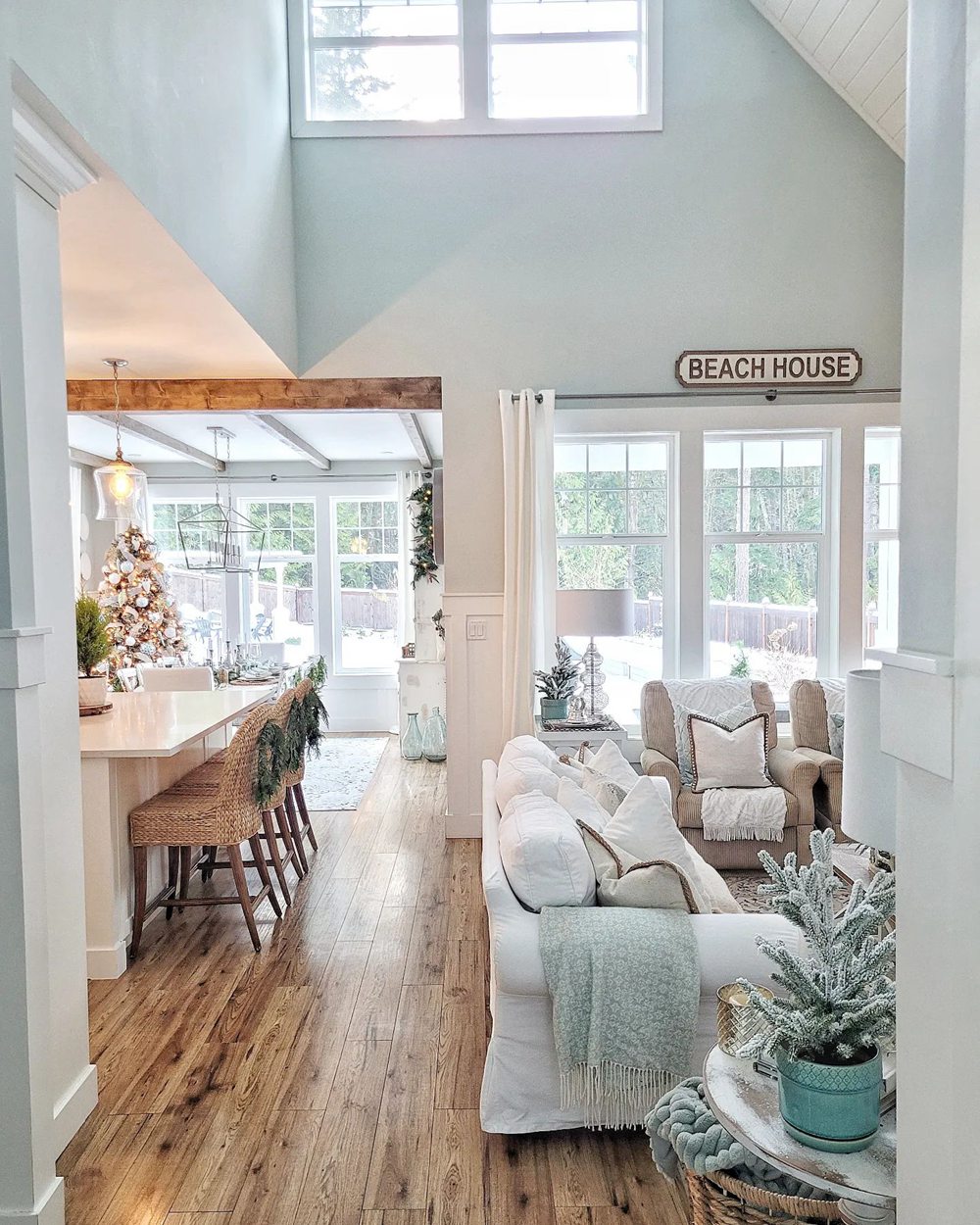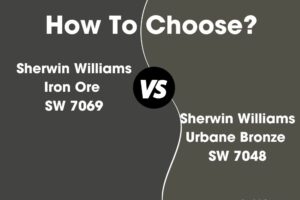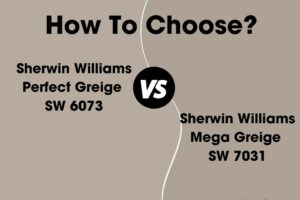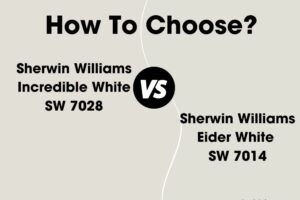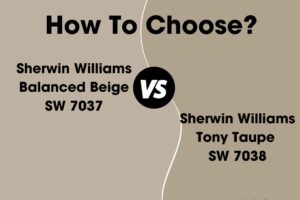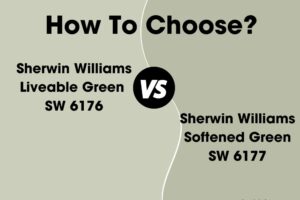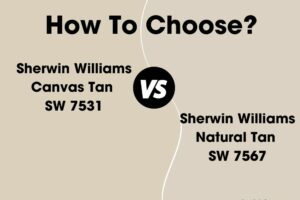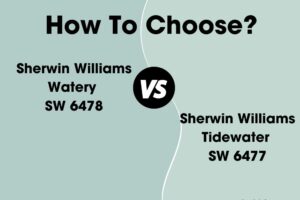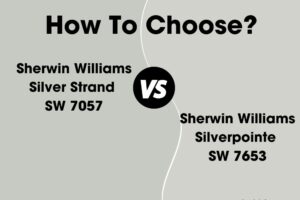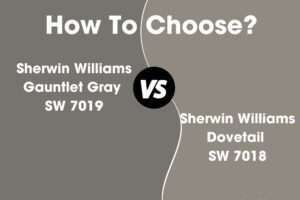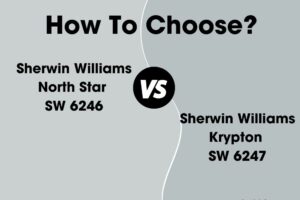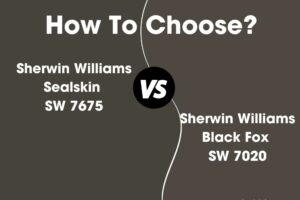With so many blues to choose from, it can be tough to decide between two similar shades. Popular options like Sherwin-Williams Tidewater SW 6477 and Sea Salt SW 6204 are beautiful blues that look alike at first glance. But what really differentiates these two gorgeous colors?
In this in-depth guide, we’ll analyze Tidewater vs Sea Salt to help you pick the perfect blue paint color for your home. We’ll compare undertones, light reflectance, real-life photos, room pairings and more.
Let’s dive in!
Table of Contents
Key Differences Between Tidewater and Sea Salt
Before getting into the details, here is an overview of the main differences between Sherwin-Williams Tidewater and Sea Salt:
- Undertones – Tidewater is a true blue, Sea Salt is a blue-green
- Light Reflectance – Tidewater has an LRV of 65, Sea Salt has an LRV of 63
- Use – Tidewater suits traditional spaces, Sea Salt works in casual rooms
- Rooms – Tidewater excels in dining rooms, Sea Salt shines in bathrooms
- Availability – Both come in all paint sheens
Now let’s explore Tidewater and Sea Salt more thoroughly.
Sherwin-Williams Tidewater SW 6477
With its rich true blue color, Sherwin-Williams Tidewater SW 6477 creates an elegant backdrop perfect for accentuating traditional decor. This versatile color works in both formal and casual spaces.
Here are some key details about Tidewater:
- LRV: 65
- Undertones: True blue
- Finish: Available in all sheens
- Rooms: Dining rooms, bedrooms, offices, living rooms
- Pairs Well With: Whites, grays, metallics
Tidewater is a gorgeous classic medium-dark blue without strong cool or warm undertones. In certain lights it can take on a denim blue or royal blue hue. The pure blue color has broad appeal.
The 65 light reflectance value keeps rooms from feeling too dark and dramatic. Tidewater strikes a nice balance between lively and moody.
This versatile blue complements both cool and warm accents alike. Popular color pairings include:
- Sherwin-Williams Pure White
- Benjamin Moore White Dove
- Sherwin-Williams Repose Gray
- Brass and gold metallic accents
- Crisp white trim
While suitable anywhere in the home, Tidewater truly shines in these elegant spaces:
- Formal Dining Rooms
- Bedrooms
- Offices
- Living Rooms
- Libraries
Tidewater’s classic appeal helps create a polished, sophisticated look when used as a backdrop.
Sherwin-Williams Sea Salt SW 6204
With its soothing green-blue color, Sherwin-Williams Sea Salt SW 6204 creates a relaxed backdrop reminiscent of the beach. This versatile color works well across styles from casual to formal spaces.
Here are some details about Sea Salt:
- LRV: 63
- Undertones: Blue-green
- Finish: Available in all sheens
- Rooms: Casual spaces like bedrooms, baths, kids’ rooms
- Pairs Well With: Neutrals, whites, natural woods
Sea Salt is a muted medium-light blue-green with subtle cool undertones. In certain lights it can take on a soothing gray-blue or pale teal appearance. The green influence gives it a refreshing relaxed look.
The 63 light reflectance value keeps the color lively without being too bold. Sea Salt provides a good balance suitable for many rooms.
This versatile blue pairs beautifully with neutral and natural accents. Popular combinations include:
- Benjamin Moore White Dove
- Sherwin-Williams Repose Gray
- Natural wood finishes
- White trim and accents
- Green foliage
While workable in any space, Sea Salt looks especially inviting in these rooms:
- Bedrooms
- Kids’ Rooms
- Bathrooms
- Kitchens
- Casual Dining Rooms
Use its relaxing blue-green backdrop to create a casual coastal feel. Sea Salt keeps spaces feeling calm and peaceful.
Comparing Tidewater vs Sea Salt
Now that we’ve looked at Tidewater and Sea Salt individually, let’s directly compare them:
Light Reflectance
Tidewater has an LRV of 65 compared to Sea Salt’s higher 63 LRV. This makes Tidewater noticeably darker and moodier.
Undertones
The main difference lies in undertones. Tidewater is a true blue. Sea Salt is a tranquil blue-green with slight green undertones.
Use & Rooms
Tidewater’s bold true blue excels in elegant formal spaces like dining rooms. Sea Salt’s casual vibe suits relaxed bedrooms and bathrooms.
Availability
Both Tidewater and Sea Salt come in all paint sheens from flat to high-gloss, maximizing finish options.
Tidewater vs Sea Salt Comparison Chart
| Paint Color | Tidewater SW 6477 | Sea Salt SW 6204 |
|---|---|---|
| LRV | 65 | 63 |
| Undertones | True blue | Blue-green |
| Use | Formal rooms | Casual rooms |
| Finishes | All sheens | All sheens |
| Style | Traditional, elegant | Coastal, modern |
Real-Life Photos: Tidewater vs Sea Salt
To better visualize the differences between Tidewater and Sea Salt, let’s look at real-life photos of the paint colors:
Sherwin-Williams Tidewater
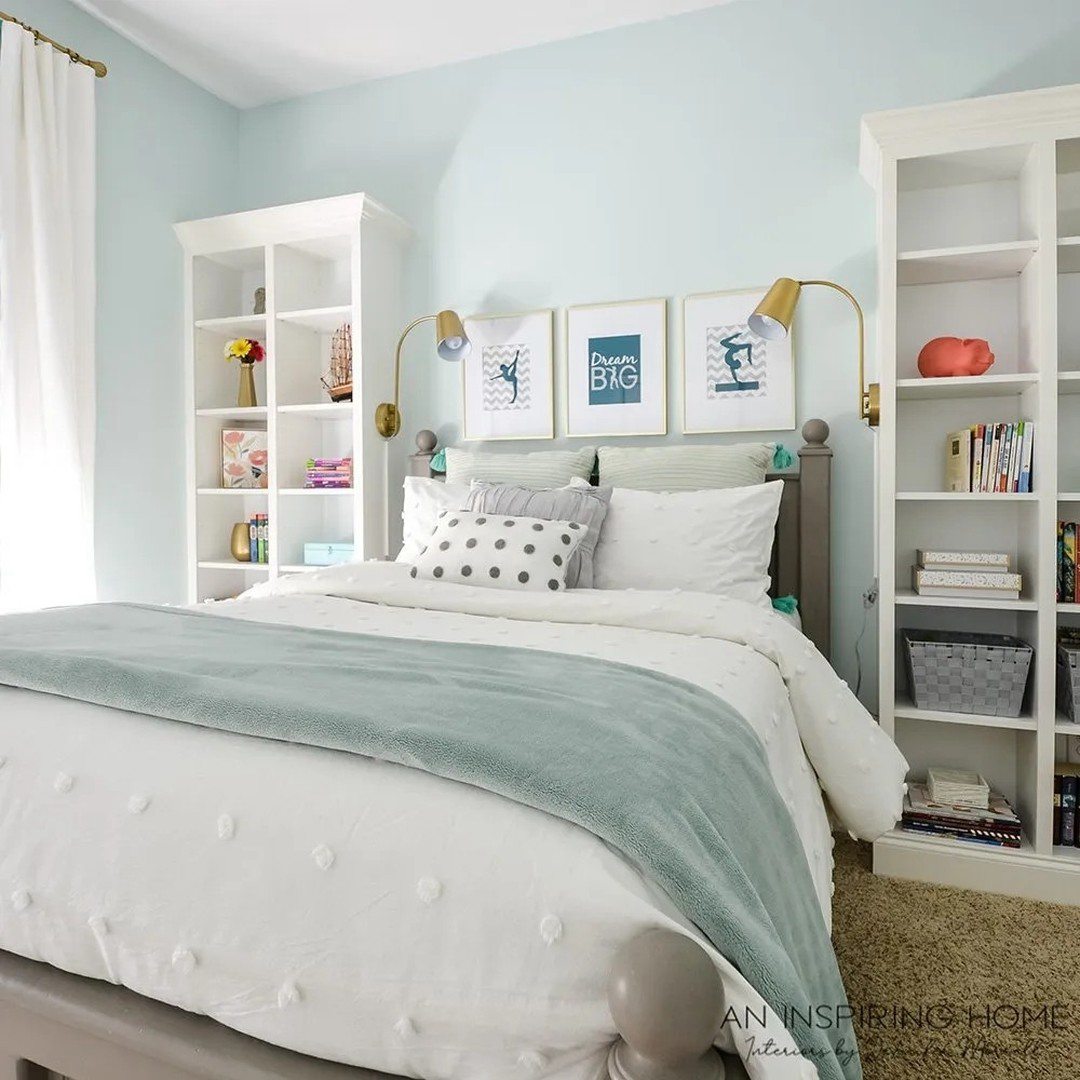
Sherwin-Williams Sea Salt
While the two blues can appear similar in some spaces, Tidewater typically appears darker and bolder than the more relaxing Sea Salt.
Should I Choose Tidewater or Sea Salt?
So how do you decide between Sherwin-Williams Tidewater or Sea Salt for your home? Here are a few tips:
Choose Tidewater SW 6477 if you want:
- A rich classic true blue
- An elegant color for formal dining rooms
- To accentuate upscale traditional decor
- A bolder blue with some drama
Choose Sea Salt SW 6204 if you want:
- A relaxing medium blue-green
- A casual color suitable for bedrooms and baths
- A versatile shade for coastal or modern spaces
- Good light reflectance for a calming vibe
Get color samples of both Tidewater and Sea Salt. Paint large sections on your walls and view at different times/lighting. This gives you the best sense of how they’ll look in your space.
You can also visualize them alongside your current decor. Both offer beautiful blue tones that complement most color schemes.
Ideal Room Pairings
Here are some rooms that are especially well-suited to Tidewater and Sea Salt:
Sherwin-Williams Tidewater
- Formal Dining Rooms
- Bedrooms
- Offices
- Living Rooms
- Libraries
Sherwin-Williams Sea Salt
- Bedrooms
- Kids’ Rooms
- Bathrooms
- Kitchens
- Casual Dining Rooms
While both blues work well throughout the home, the above applications make optimal use of their distinct vibes and strengths.
Decorating Ideas and Color Pairings
On their own, Tidewater and Sea Salt create eye-catching backdrops. Complement them with other colors and materials for gorgeous spaces:
Tidewater SW 6477 Pairings
- Sherwin-Williams Pure White
- Benjamin Moore White Dove
- Sherwin-Williams Repose Gray
- Gold and brass metallic accents
- Crisp white trim
Sea Salt SW 6204 Pairings
- Benjamin Moore White Dove
- Natural wood finishes
- Rattan and woven textures
- White molding and ceilings
- Green plants and accents
Tidewater vs Sea Salt – Which is Better?
So which blue paint color is better, Tidewater or Sea Salt?
Consider Tidewater SW 6477 if you want:
- A bold true blue perfect for elegant dining rooms
- To accentuate upscale traditional decor
- A darker blue with some dramatic allure
- A versatile color also suitable for bedrooms
Consider Sea Salt SW 6204 if you want:
- A relaxing muted blue-green shade
- A casual color perfect for bedrooms and baths
- To evoke a coastal cottage or modern vibe
- Good light reflectance for a calming ambiance
While Tidewater offers gorgeous drama, Sea Salt provides more livability and a casual feel.
Get samples of both before deciding. Either beautiful blue you choose will create a stunning backdrop.
Frequently Asked Questions
Still trying to decide between Tidewater or Sea Salt? Here are answers to some common questions:
What are the main differences between Tidewater and Sea Salt?
The main differences are their undertones and suitability for formal vs. casual spaces. Tidewater is a bold true blue. Sea Salt is a more relaxed green-blue.
What colors pair well with Tidewater?
Tidewater looks beautiful paired with crisp whites, warm grays, gold and brass metallics, and white trim for nice contrast.
Can you use Sea Salt in a kitchen?
Definitely, Sea Salt is light enough to work nicely in a kitchen. Its relaxing hue will make the space feel calm and inviting.
Is Tidewater suited for north facing rooms?
At 65 LRV, Tidewater is dark enough for north facing spaces without appearing too dismal and dreary.
What sheens does Sea Salt come in?
Sea Salt is very versatile and comes in all finishes from flat matte to high gloss, suiting any aesthetic.




